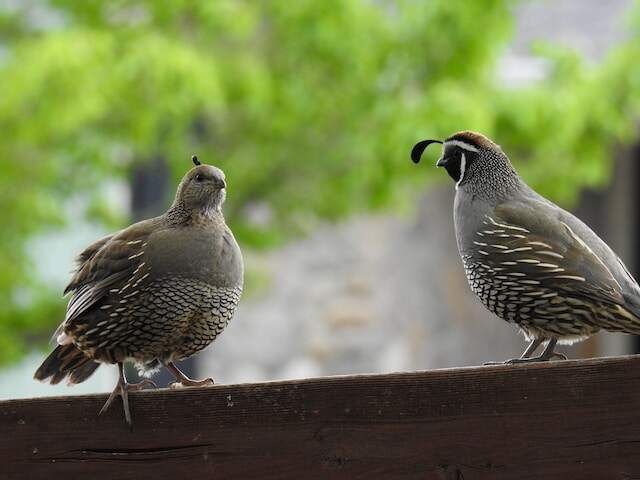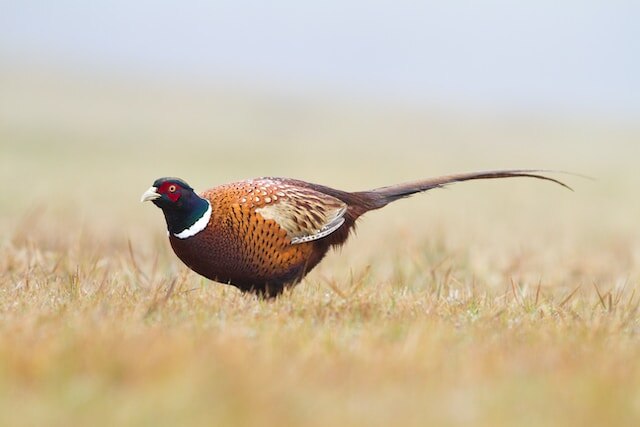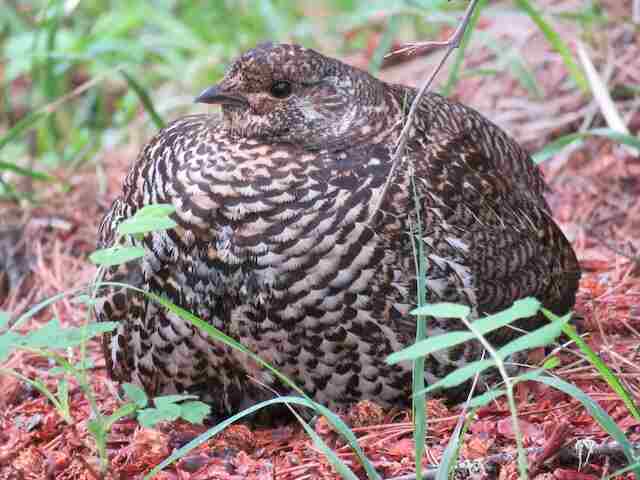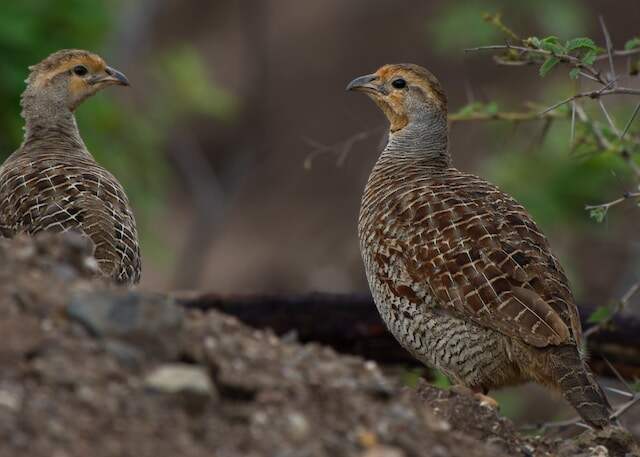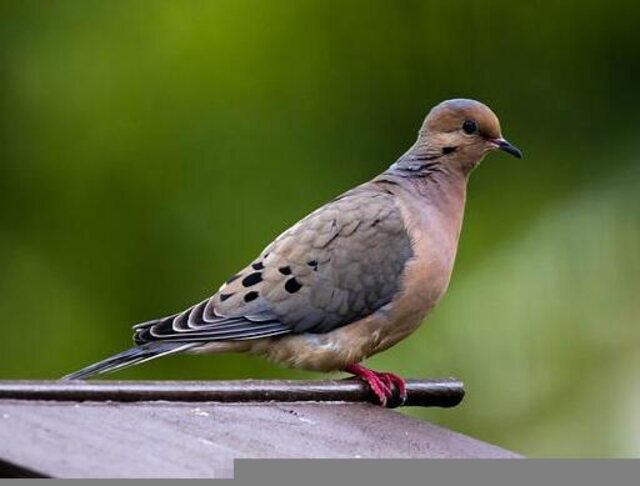Are you curious about which feathered friends are on the menu? Wonder no more! In this tantalizing article, we’ll unveil the world of avian cuisine and answer the burning question: “What kind of birds can you eat?”
Get ready to explore a delicious realm where culinary adventures take flight. So, let’s dive into this delectable topic and discover the surprising array of edible birds that await your taste buds.
Table of Contents
- 1 Overview
- 2 Poultry Birds
- 3 Game Birds
- 4 Wild Birds
- 5 Frequently Asked Questions
- 5.1 Are there any health risks associated with eating wild birds?
- 5.2 What is the best way to prepare quail for cooking?
- 5.3 Can you eat any part of a pheasant, or are there certain parts that are inedible?
- 5.4 Is there a difference in taste between wild turkey and farm-raised turkey?
- 5.5 How can you tell if a duck is fully cooked and safe to eat?
- 6 Conclusion
- 7 Author
Overview
The edibility of avian species is contingent upon their classification, with poultry, game, and wild birds being the three primary categories of birds consumed for sustenance.
Birds have been a staple of human diets for centuries, and for good reason. They are an excellent source of protein, low in fat, and packed with essential nutrients like iron, zinc, and vitamin B12.
Additionally, eating birds has been linked to a range of health benefits, such as reducing the risk of heart disease and stroke.
Popular bird dishes around the world include roasted chicken, duck confit, quail eggs, and turkey sandwiches.
However, ethical considerations regarding the treatment of birds in the food industry have become increasingly relevant.
Many consumers are now opting for free-range and organic options to ensure that the birds they consume have been raised in humane conditions.
As a result, the demand for alternative sources of protein, such as plant-based options, has also risen.
In the subsequent section, we will explore the different types of poultry birds that are commonly consumed around the world.
Poultry Birds
Poultry birds, widely consumed for their high nutritional value, offer a range of delicious meat options. These birds have been selectively bred to optimize their growth and meat quality, making them a popular choice for cooking.
Chicken, turkey, duck, and geese are the most commonly consumed poultry birds. Chicken, in particular, is a versatile meat that can be cooked in a variety of ways, such as grilling, roasting, frying, and baking.
It is a good source of protein and low in fat, making it a healthy option for those watching their weight. Popular chicken dishes include fried chicken, chicken soup, and chicken tikka masala.
With its mild flavor and ability to absorb different flavors, chicken is a staple in many kitchens around the world.
Chicken
Chicken, a versatile and widely consumed meat, offers various cooking options and is a good source of protein with low-fat content, making it a popular and healthy choice for those concerned about their diet.
Different chicken breeds can be used for different purposes such as broilers for meat production and layers for egg production.
Chicken can be used in a variety of recipes, from classic roasted chicken to exotic dishes such as chicken tikka masala.
Moreover, chicken is rich in nutrients such as protein, vitamin B6, and phosphorus, which are essential for maintaining a healthy body.
Furthermore, chicken can be a great alternative to red meat as it has lower saturated fat content and cholesterol levels. This makes it a good choice for those who are looking to reduce their risk of heart disease.
Additionally, chicken can also be a good source of selenium, which is known for its antioxidant properties.
In conclusion, chicken is a nutritious and versatile meat that can be incorporated into a variety of recipes with different cooking techniques and can be enjoyed by people of all ages and backgrounds.
Table: Chicken Cooking Tips
| Cooking Technique | Tips and Tricks |
|---|---|
| Roasting | Preheat oven, season with herbs, baste for moisture |
| Grilling | Marinate beforehand, use direct heat for even cooking |
| Pan-frying | Bread with flour or breadcrumbs for a crispy coating |
| Slow-cooking | Use a crockpot or slow cooker for tender meat |
Next, let’s explore another type of edible bird – turkey.
Turkey
Turkey, a popular and widely consumed game bird, offers a range of health benefits and can be prepared using various cooking methods, making it a versatile option for many meals.
Turkey is a great source of protein, low in fat, and contains essential vitamins and minerals such as iron, zinc, and potassium.
In addition to its nutritional benefits, turkey can be incorporated into a variety of recipes, from traditional roasted turkey to turkey burgers and turkey chili.
Properly cooking a turkey is important to ensure its safety and optimal flavor.
Tips for cooking a turkey include thawing it in the refrigerator, cooking it at the appropriate temperature and time, and using a meat thermometer to check for doneness.
Some popular turkey recipes include turkey and vegetable stir-fry, turkey meatballs, and turkey tacos.
Turkey can also be substituted for chicken in many recipes, such as chicken parmesan or chicken alfredo.
When it comes to cooking a turkey, there are many methods to choose from, including roasting, grilling, or smoking. Each method offers a unique flavor and texture to the meat.
Overall, turkey is a delicious and healthy option for any meal, offering versatility and endless possibilities for creating new and exciting dishes.
Table: Turkey Cooking Tips
| Cooking Technique | Tips and Tricks |
|---|---|
| Roasting | Brine the turkey prior to roasting for moist meat |
| Smoking | Use a flavorful wood like hickory or apple for smoking |
| Deep-frying | Ensure the turkey is fully thawed and carefully lower it into the hot oil |
| Grilling | Create a two-zone fire for indirect grilling, baste with butter or marinade |
Next, we will explore the nutritional benefits and cooking methods of another edible bird, the duck.
Duck
Duck, a flavorful and nutrient-rich game bird, offers a variety of culinary options and can be prepared using different cooking techniques to enhance its unique taste and texture.
One of the top duck recipes is roasted duck, which involves seasoning the bird with herbs and spices, and roasting it in the oven until the skin is crispy and the meat is cooked to perfection.
Another popular way to prepare duck is by smoking it, which infuses the meat with a smoky flavor and gives it a tender texture.
Duck can also be used in stir-fries, stews, and soups, adding depth and richness to the dish.
Apart from its delicious taste, duck meat is also packed with nutritional benefits.
It is a good source of protein, iron, and vitamin B6, which promotes healthy brain function.
Duck meat is also rich in omega-3 fatty acids, which are essential for heart health and can help reduce inflammation in the body.
However, it is important to properly prepare and cook duck, as it can be high in fat and calories.
To reduce the fat content, remove excess skin and fat before cooking, and opt for cooking methods that do not involve adding extra oil or butter.
With its rich flavor and numerous health benefits, duck is a versatile and tasty addition to any meal.
Table 5: Duck Cooking Tips
| Cooking Technique | Tips and Tricks |
|---|---|
| Roasting | Score the skin to render out fat and achieve crispy skin |
| Confit | Slow-cook in its own fat for a tender and flavorful result |
| Stir-frying | Cut into thin strips, cook quickly over high heat |
| Grilling | Precook the duck before grilling to ensure even cooking |
Moving on to geese, these birds also offer a unique culinary experience, with their rich and gamey flavor.
Geese
Geese, with their distinctively rich and gamey flavor, can be prepared using a variety of cooking methods to enhance their taste and texture, much like a fine cut of red meat.
Roasting is one of the most common cooking methods for geese, allowing the fat to render and the skin to crisp up. Other popular cooking methods include grilling, smoking, and confit, which involves cooking the bird slowly in its own fat.
When it comes to nutritional value, geese are a good source of protein and iron, but their high fat content should be taken into consideration.
To reduce the fat content, the skin can be removed before cooking or the bird can be cooked using low-fat cooking methods.
There are several popular recipes for geese, including the classic French dish, ‘Canard à l’Orange,’ which involves roasting the bird with a sweet and tangy orange sauce.
Another popular recipe is ‘Roast Goose with Potato Stuffing,’ which involves stuffing the bird with a mixture of potatoes, herbs, and spices before roasting it to perfection.
As for game birds, they are a broad category that includes quail, pheasant, grouse, and partridge.
These birds are known for their slightly gamey flavor and can be prepared using a variety of cooking methods, including roasting, grilling, and braising.
Table 6: Geese Cooking Tips
| Cooking Technique | Tips and Tricks |
|---|---|
| Roasting | Prick the skin to release fat, use a drip pan for easy cleanup |
| Smoking | Brine the goose before smoking for added flavor |
| Braising | Cook low and slow in a flavorful liquid for tender meat |
| Grilling | Precook the goose to render out fat, then finish on the grill |
Game birds are also a good source of protein and iron, making them a healthy addition to any diet.
Game Birds
Game birds, such as quail, pheasant, grouse, and partridge, offer a unique and slightly gamey flavor that can be enhanced through various cooking methods, making them a delicious addition to any meal.
These birds are often hunted for their meat, and hunting regulations vary by region and species. Quail, for example, can be hunted in many parts of the United States during specific seasons, while other game birds may have stricter regulations.
In addition to their taste, game birds can also provide nutritional benefits, as they are often leaner and contain higher levels of protein than other meats.
When it comes to cooking game birds, there are several methods that can be used to bring out the best flavor and texture. Some popular techniques include roasting, grilling, and braising.
Roasting is a great option for smaller birds like quail, while grilling can add a smoky flavor to larger birds like pheasant.
Braising, which involves cooking the bird in liquid for a longer period of time, can help to tenderize tougher cuts of meat.
With a little experimentation and creativity, game birds can be transformed into a variety of delicious and innovative dishes.
Next, we will explore the unique qualities of quail and how they can be prepared to create a flavorful and satisfying meal.
Quail
Quail, a small game bird known for its unique flavor, can be prepared using various cooking methods to create a delicious and nutritious meal.
Quail is a type of game bird that is high in protein, iron, and vitamin B12, making it an excellent addition to a healthy diet. It is also low in fat, which makes it a great alternative to other poultry birds.
Some popular recipes for quail include roasted quail with herbs and garlic, grilled quail with lemon and rosemary, and quail stuffed with rice and vegetables.
In terms of hunting and farming practices, quail can be found in the wild in many parts of the world, and are often hunted for sport.
However, quail is also farmed in many countries, which makes it an easily accessible source of protein. Quail farming is a sustainable practice, as these birds require less space and feed than other poultry birds.
Overall, quail is a delicious and nutritious option for those looking to add more variety to their diet.
Table: Cooking Tips for Quail
| Preparation Method | Cooking Time | Recommended Internal Temperature | Tips and Notes |
|---|---|---|---|
| Roasting | 20-30 minutes | 165°F (74°C) | Baste with butter or marinade to keep the meat moist and flavorful. |
| Grilling | 8-10 minutes | 165°F (74°C) | Use indirect heat to prevent the delicate meat from drying out. |
| Pan-frying | 6-8 minutes | 165°F (74°C) | Cook on medium-high heat for a crispy skin and tender meat. |
| Braising | 45-60 minutes | 165°F (74°C) | Simmer in flavorful liquid to ensure tender and juicy results. |
Moving on to the next subtopic of pheasant, this game bird is also a popular choice for those looking to try something new in the kitchen.
Pheasant
Pheasant, another game bird, offers a unique flavor profile and can be prepared using a variety of cooking methods to create a delicious and nutritious meal.
Here are some interesting facts about this bird that you may not have known:
- Pheasant is a good source of protein, with a 3-ounce serving containing about 23 grams.
- It is also rich in vitamins and minerals, including niacin, vitamin B6, and selenium.
- Pheasant hunting is regulated in many states, with restrictions on the number of birds that can be taken and the hunting season.
- Pheasant can be prepared using a variety of cooking methods, including roasting, grilling, and braising.
If you’re looking for a tasty and healthy alternative to chicken or turkey, consider giving pheasant a try. With its rich, gamey flavor and versatility in the kitchen, it’s certain to become a new favorite for adventurous cooks.
Table: Cooking Tips for Pheasant
| Preparation Method | Cooking Time | Recommended Internal Temperature | Tips and Notes |
|---|---|---|---|
| Roasting | 25-30 minutes per pound | 165°F (74°C) | Cover with foil to prevent drying out and remove during the last few minutes for a crispy skin. |
| Grilling | 12-15 minutes | 165°F (74°C) | Marinate before grilling to add flavor and prevent the meat from drying out. |
| Slow Cooking | 6-8 hours | 165°F (74°C) | Cook on low heat with aromatic vegetables and broth for tender meat. |
| Sautéing | 8-10 minutes | 165°F (74°C) | Use butter or oil for added richness and cook until golden brown. |
In the next section, we’ll take a closer look at another popular game bird: grouse.
Grouse
Grouse, a bird commonly found in forests and other wooded areas, provides a unique taste and texture that is distinct from other types of edible fowl.
The hunting season for grouse typically runs from September to January, making it a popular game bird amongst hunters.
When it comes to cooking techniques, grouse can be prepared in a variety of ways, including roasting, grilling, and smoking.
Due to their lean meat, marinating is highly recommended to help tenderize the meat and add flavor.
Additionally, grouse is a great source of protein, iron, and vitamin B12, making it a healthy addition to any diet.
Table: Cooking Tips for Grouse
| Preparation Method | Cooking Time | Recommended Internal Temperature | Tips and Notes |
|---|---|---|---|
| Roasting | 30-35 minutes per pound | 165°F (74°C) | Baste with butter or oil to enhance the flavor and prevent drying out. |
| Braising | 1-1.5 hours | 165°F (74°C) | Cook with aromatic vegetables and broth for tender and moist meat. |
| Grilling | 10-12 minutes | 165°F (74°C) | Use indirect heat to prevent charring and cook until medium-rare. |
| Smoking | 2-3 hours | 165°F (74°C) | Use flavorful wood chips for a smoky taste and tender meat. |
Moving on to partridge, another game bird that is often consumed, it is important to note that while it is similar to grouse in taste and texture, it is slightly smaller and has a more delicate flavor.
Partridge
Partridge, a game bird similar in taste and texture to grouse but with a more delicate flavor, is often consumed and provides a good source of protein, iron, vitamin B6, and vitamin B12.
Partridges are commonly hunted using traditional methods such as flushing the birds out of cover with dogs or walking through fields and shooting them on the wing.
The process of hunting partridge not only provides a source of food but also promotes a healthy lifestyle as it involves being outdoors and engaging in physical activity.
In addition to being a tasty and lean source of protein, partridge offers several health benefits.
It is low in fat and high in nutrients, making it an excellent choice for those who want to maintain a healthy diet.
Popular recipes for partridge include roasting, grilling, and braising, often accompanied by seasonal vegetables and herbs.
However, it is important to note that hunting and preparing wild game birds requires skill and knowledge to ensure safe consumption.
Moving on to the topic of wild birds, let us explore the unique characteristics and culinary uses of this category of birds.
Table: Cooking Tips for Partridge
| Preparation Method | Cooking Time | Recommended Internal Temperature | Tips and Notes |
|---|---|---|---|
| Roasting | 25-30 minutes per pound | 165°F (74°C) | Rub with herbs and butter for added flavor and a golden-brown skin. |
| Sautéing | 6-8 minutes | 165°F (74°C) | Cook in a hot skillet with oil or butter for a quick and tasty meal. |
| Stewing | 1-1.5 hours | 165°F (74°C) | Simmer with vegetables and broth for tender and flavorful meat. |
| Grilling | 10-12 minutes | 165°F (74°C) | Use medium heat and baste with marinade to keep the meat moist. |
Wild Birds
As hunting regulations vary from state to state, it is important to check your local laws before hunting any wild birds.
Wild birds can be a great source of protein, as they are typically leaner than domesticated birds like chicken or turkey.
However, it is important to note that some wild birds may contain higher levels of contaminants like lead from eating contaminated food or water.
It is recommended to properly clean and prepare wild birds before cooking and consuming them.
Nutritional value can vary depending on the type of wild bird, but in general, they are a good source of protein, iron, and vitamin B12.
Cooking methods for wild birds can range from grilling, roasting, or even slow-cooking in a stew. It is important to ensure that the bird is cooked thoroughly to prevent the risk of foodborne illness.
Some popular recipes for wild birds include pheasant pot pie and quail with rosemary and garlic.
Table: Cooking Tips for Wild Turkey
| Preparation Method | Cooking Time | Recommended Internal Temperature | Tips and Notes |
|---|---|---|---|
| Roasting | 20-25 minutes per pound | 165°F (74°C) | Brine the turkey before roasting for a juicy and flavorful result. |
| Smoking | 4-6 hours | 165°F (74°C) | Use a hardwood like hickory or oak for a rich smoky flavor. |
| Grilling | 12-15 minutes per pound | 165°F (74°C) | Cook over indirect heat to prevent drying out and baste for added moisture. |
| Deep Frying | 3-4 minutes per pound | 165°F (74°C) | Follow proper safety precautions and monitor the temperature closely. |
Moving on to the next subtopic, it is important to note that wild turkey is a popular game bird that is also edible.
While similar in taste to domesticated turkey, wild turkey is leaner and has a more complex flavor. In the next section, we will explore the hunting regulations, nutritional value, and cooking methods for wild turkey.
Wild Turkey
Wild turkey is a game bird that has a distinct flavor and is a good source of protein, iron, and vitamin B12. Hunting techniques for wild turkey vary depending on the region and season, but knowing the proper approach can make the experience more enjoyable.
Regulations vary from state to state, so it is important to research and comply with local laws. In terms of nutritional value, wild turkey is a lean protein that is low in fat and cholesterol.
It is also rich in iron, which is essential for healthy blood circulation, and vitamin B12, which is crucial for maintaining healthy nerve function.
To prepare wild turkey, there are countless recipes available that range from simple roasting to elaborate marinades and stuffings.
Moving on to dove, this bird is another edible wild game option that has gained popularity in recent years.
Doves are small birds that are typically hunted in the fall, and their meat is considered a delicacy in many cultures.
Like wild turkey, dove is a lean protein that is low in fat and high in iron and vitamin B12. The meat has a delicate flavor that pairs well with a variety of herbs and spices.
Some popular recipes for dove include bacon-wrapped dove breasts, grilled dove skewers, and dove pot pie.
When preparing dove, it is important to remove any feathers and clean the bird thoroughly before cooking.
Dove
Dove, a small bird commonly found all around the world, is considered as a delicacy in many cultures.
Dove recipes have been passed down from generations and are still enjoyed by many today.
Apart from being a delicious treat, dove meat is also known for its nutritional value. It is a great source of protein and contains essential vitamins and minerals like iron, zinc, and vitamin B12.
However, it is important to note that hunting regulations for dove vary from country to country.
In some places, it may be illegal to hunt doves without a license or during certain seasons.
Therefore, it is vital to check the hunting regulations in your area before going out to hunt doves.
With the right permits and equipment, hunting doves can be a thrilling and rewarding experience, followed by a delicious meal.
Table: Cooking Tips for Dove
| Preparation Method | Cooking Time | Recommended Internal Temperature | Tips and Notes |
|---|---|---|---|
| Grilling | 2-3 minutes per side | 165°F (74°C) | Marinate the dove meat for a few hours to enhance its flavor. |
| Bacon-Wrapped | 8-10 minutes | 165°F (74°C) | Wrap the dove breasts in bacon before grilling for added juiciness. |
| Sautéing | 3-4 minutes | 165°F (74°C) | Cook the dove breasts in a hot skillet with butter for a quick and tasty meal. |
| Braising | 45-60 minutes | 165°F (74°C) | Simmer the dove meat in flavorful liquid to ensure tenderness. |
Frequently Asked Questions
Are there any health risks associated with eating wild birds?
Consumption of wild birds can pose potential health risks to individuals due to the possibility of exposure to bacterial pathogens, parasites, and viruses.
These risks can be reduced by properly cooking the meat to an internal temperature of 165°F, as this kills harmful microorganisms.
However, it is important to note that some viruses, such as avian influenza, may not be eliminated through cooking.
Therefore, individuals should exercise caution when consuming wild birds and should follow recommended safety guidelines to reduce their risk of illness.
It is also advisable to purchase wild birds from reputable sources and to avoid consuming birds that appear sick or have abnormal behavior.
What is the best way to prepare quail for cooking?
Quail is a small game bird that is known for its delicate flavor and tender meat. One of the most popular ways to prepare quail is by grilling it.
Grilled quail is a great way to showcase the flavor of the bird, and it can be seasoned with a variety of herbs and spices to enhance its natural taste.
Another popular method of preparing quail is by roasting it. Roasted quail is a great option for those who prefer a more savory flavor, as it can be stuffed with a variety of ingredients like onions, garlic, and herbs.
Quail stuffing is a great way to add even more flavor to the bird, and it can be made with a variety of ingredients like bread crumbs, sausage, and dried fruit.
No matter how you choose to prepare quail, it is sure to be a hit at your next dinner party or family gathering.
Can you eat any part of a pheasant, or are there certain parts that are inedible?
When it comes to cooking wild birds, pheasant is a popular choice. Unlike quail, which has a distinctive sweet and nutty flavor profile, pheasant has a gamey taste that pairs well with earthy herbs such as rosemary and thyme.
In terms of which parts of the bird are edible, the breasts and thighs are the most commonly consumed. However, the legs and wings can also be used in stews and soups to add flavor and nutrition.
When preparing pheasant, it is important to marinate the meat beforehand to ensure it stays moist during cooking. Additionally, pheasant can be cooked in a variety of ways including roasting, grilling, and braising.
With the right techniques and seasoning, pheasant can be a delicious and innovative addition to any wild game cuisine.
Is there a difference in taste between wild turkey and farm-raised turkey?
When it comes to comparing the taste of wild turkey and farm-raised turkey, there are a few factors to consider.
Wild turkey tends to have a richer, more intense flavor due to its diet and active lifestyle. It can also be leaner and tougher, which requires different cooking techniques to maintain tenderness and moisture.
Cooking tips for wild turkey include marinating or brining before cooking, cooking at low temperatures, and adding moisture through basting or stuffing.
On the other hand, farm-raised turkey is often milder and tender, but may lack the depth of flavor that wild turkey offers.
In terms of nutritional differences, wild turkey is typically lower in fat and higher in protein than farm-raised turkey, which may be attributed to the natural diet and exercise of wild birds.
Ultimately, the choice between wild and farm-raised turkey comes down to personal preference and desired flavor profile.
How can you tell if a duck is fully cooked and safe to eat?
When it comes to cooking duck, it is important to ensure that it is fully cooked to prevent any risk of foodborne illness.
Internal temperature is the most reliable way to determine whether or not a duck is fully cooked. The internal temperature of a properly cooked duck should reach 165°F (74°C) in the thickest part of the meat.
Cooking time can vary depending on the size of the bird, but it is generally recommended to cook a duck for 20-30 minutes per pound.
In addition to internal temperature and cooking time, there are also visual cues that can help determine when a duck is fully cooked.
The skin should be golden brown and crispy, and the juices should run clear when the meat is pierced with a fork.
By paying close attention to internal temperature, cooking time, and visual cues, one can ensure that the duck is fully cooked and safe to eat.
Conclusion
In conclusion, there are various types of birds that are safe and enjoyable to eat. Poultry birds, such as chicken, turkey, duck, and geese, are commonly consumed and readily available.
Game birds, such as quail, pheasant, grouse, and partridge, are popular among hunters and food enthusiasts for their unique taste and texture.
Wild birds, like wild turkey and dove, offer a more innovative dining experience and are often preferred by those looking for a different flavor profile.
To put it simply, the world of bird meat is vast and varied, much like the different types of birds themselves.
Just as each bird has its own distinct characteristics, so too does each type of bird meat offer its unique benefits and culinary pleasures.
Whether you are a fan of classic poultry or prefer to venture into the world of game and wild birds, there is undoubtedly a bird meat out there that will satisfy your taste buds and provide you with a memorable dining experience.






